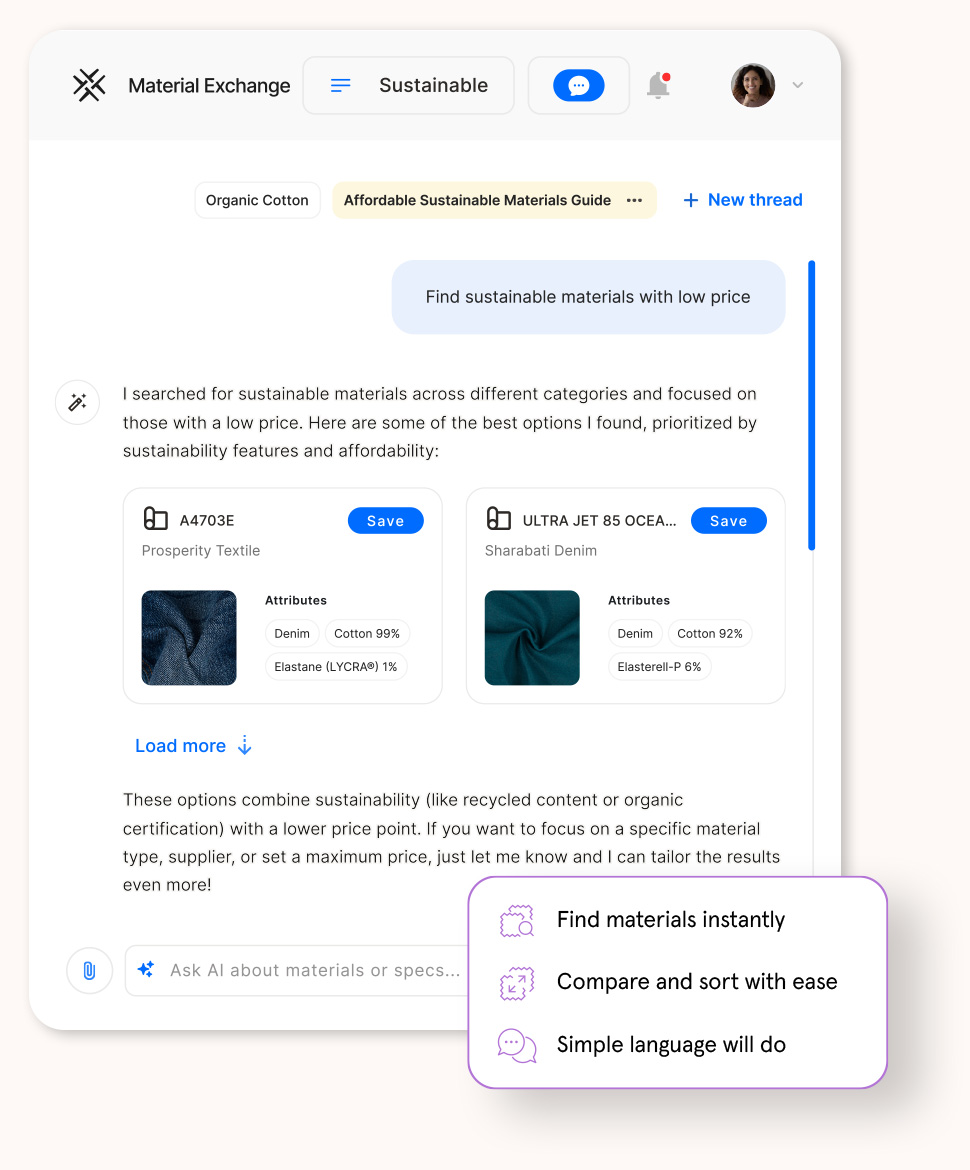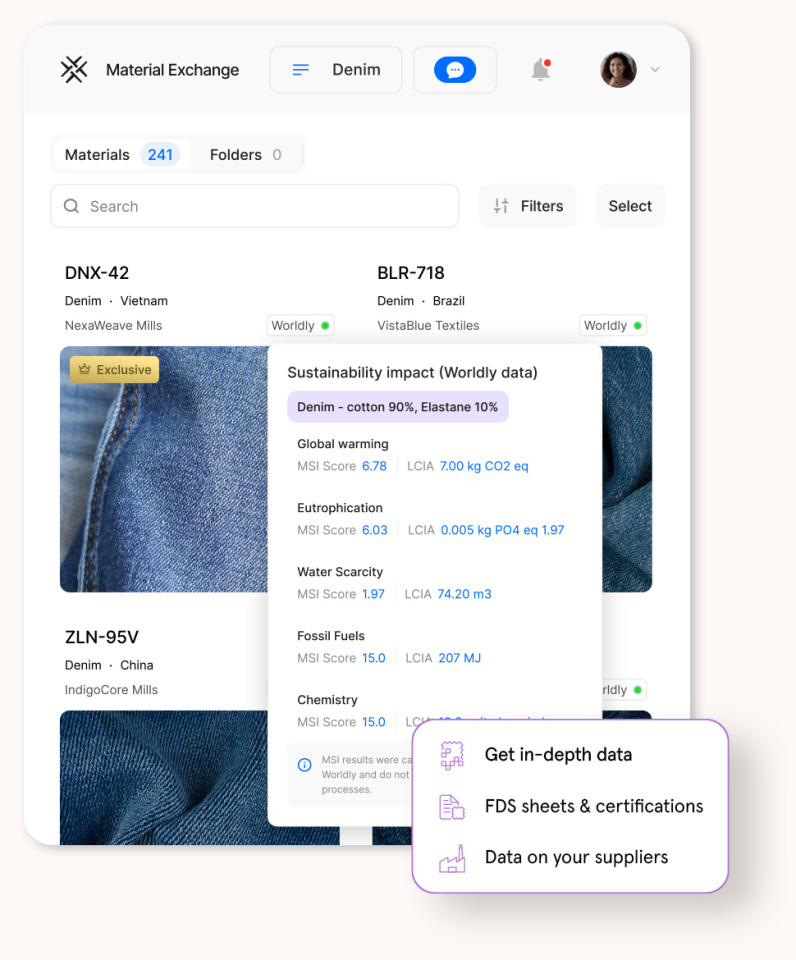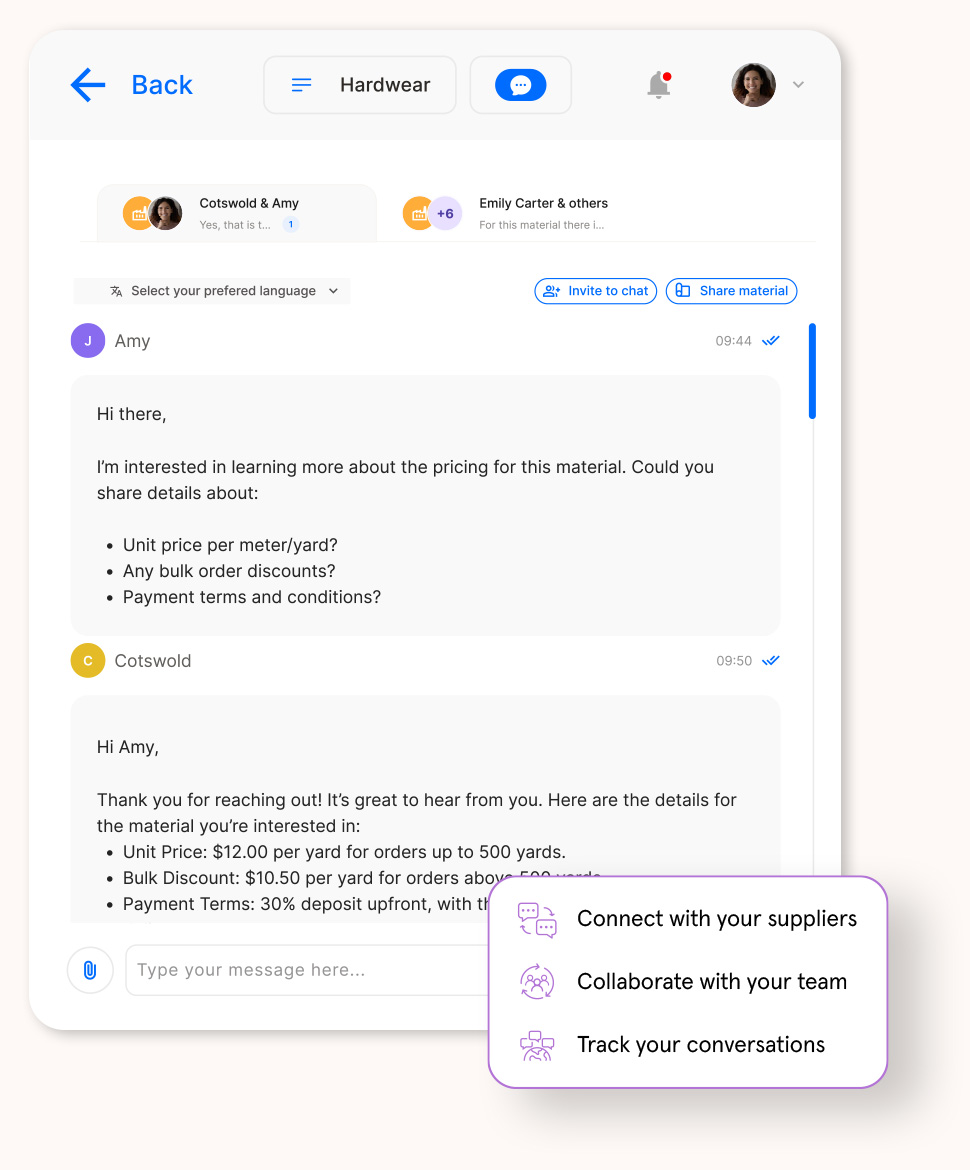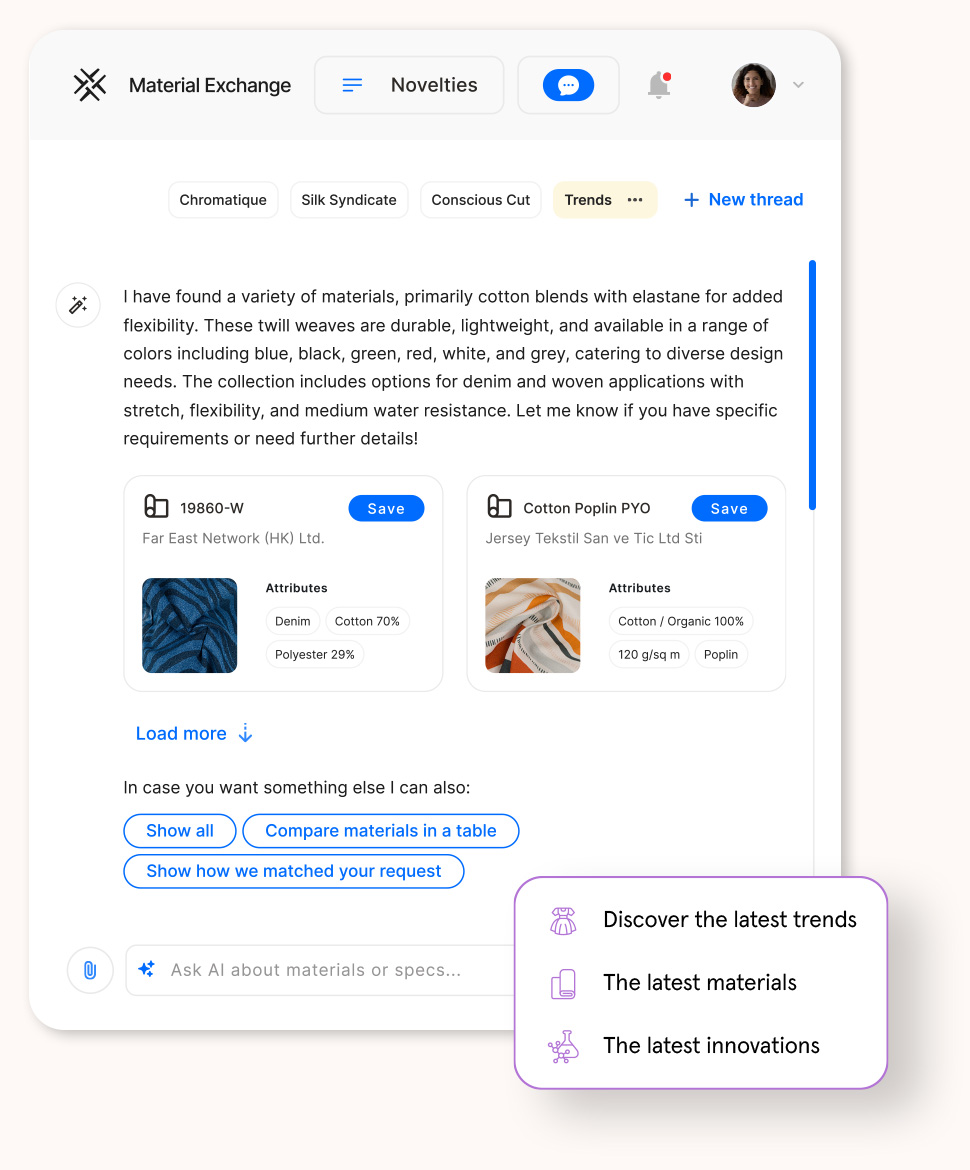Smarter sourcing
starts with Frank
Simplify your sourcing with Frank, fashion's first AI sourcing assistant. Find the right materials, the data you need, and connect with suppliers – all in one place.

Find the
right materials
Get in-depth
data
Centralize your communication
How Frank transforms
your sourcing







Frank meets Worldly
Sustainable sourcing just got a whole lot easier since Frank has teamed up with the planet's leading sustainability data platform, Worldly. Now, brands can access detailed information about the environmental impact of the materials they source and the facilities that create them. Book a demo with us to see Frank and Worldly in action.
